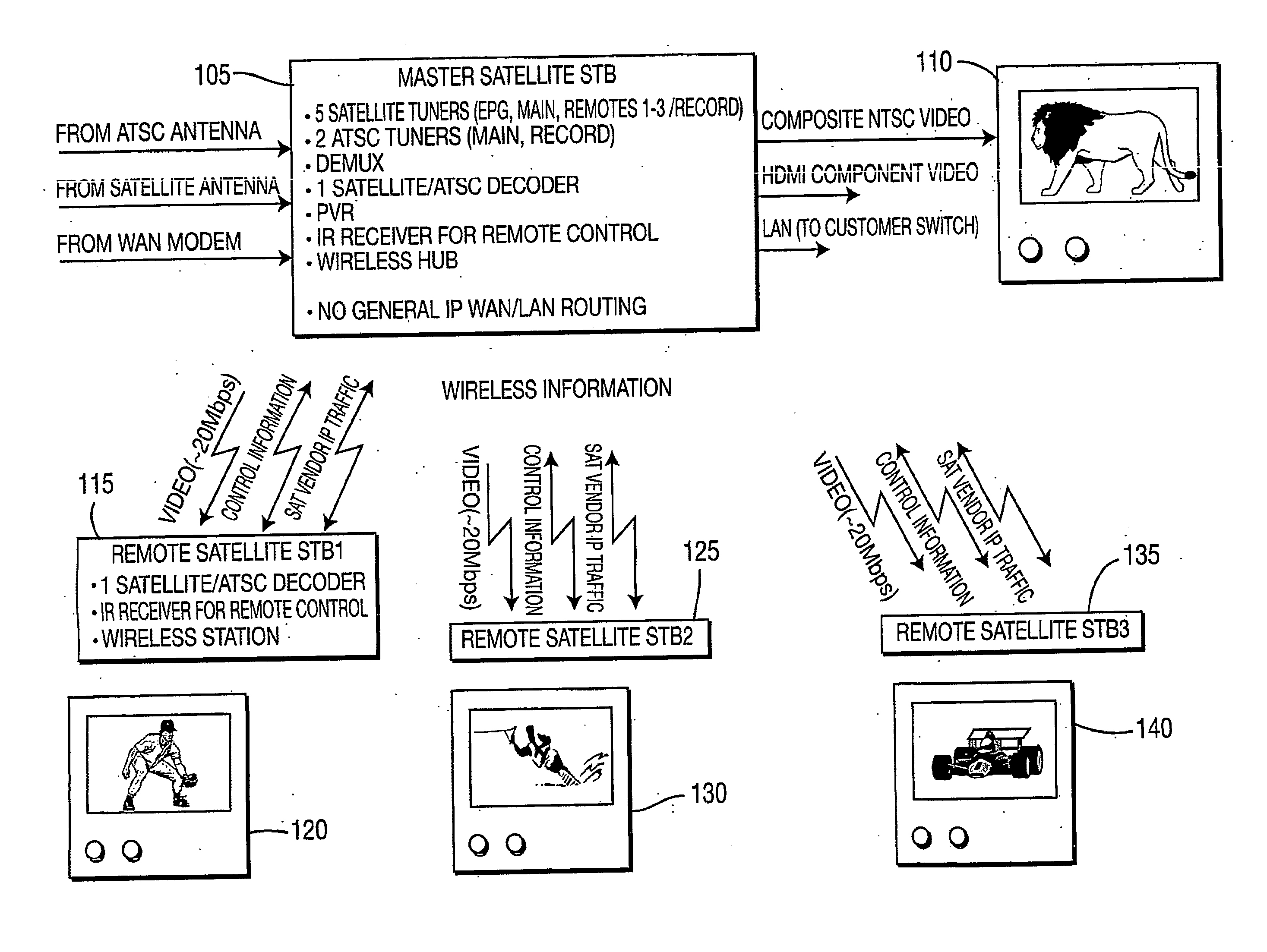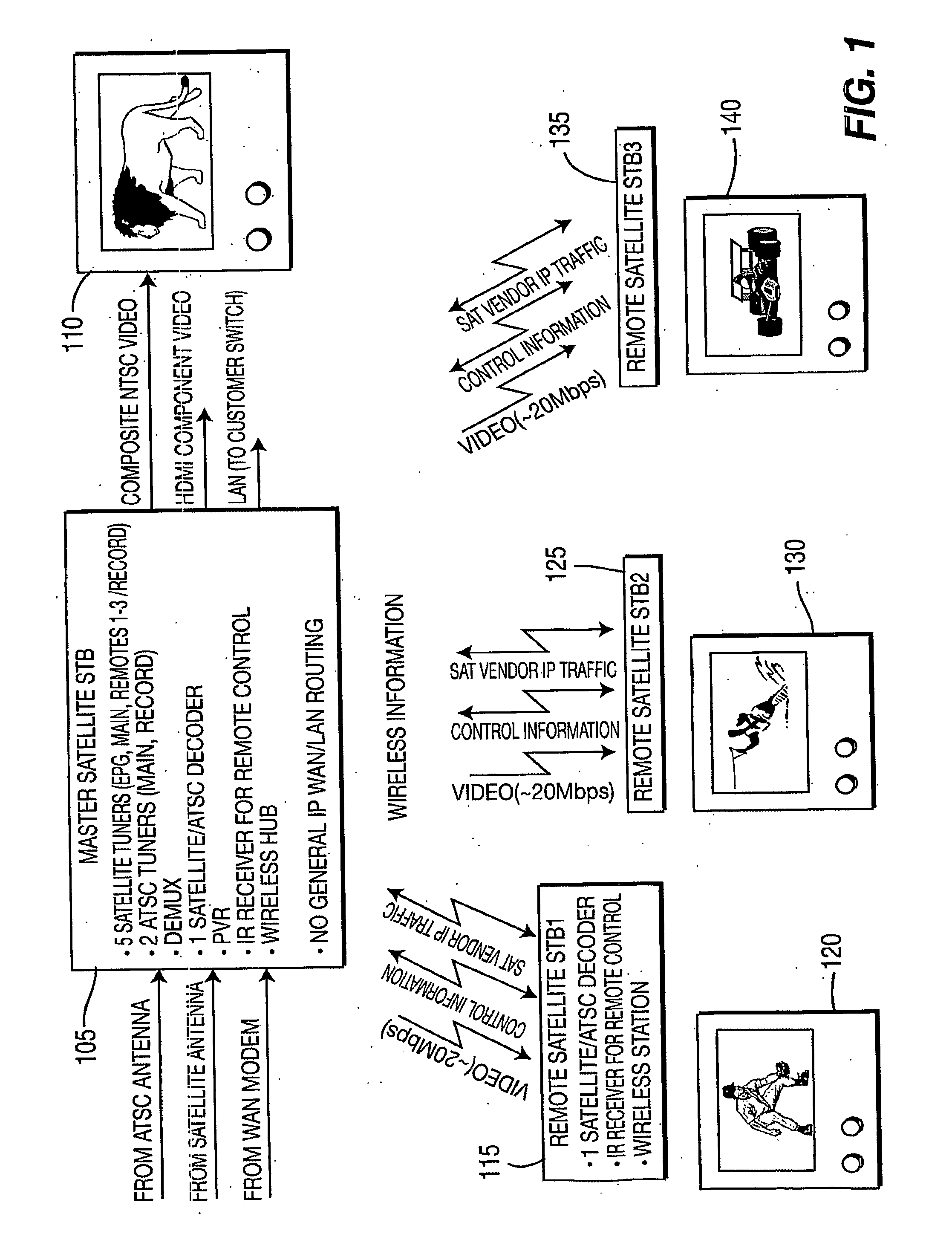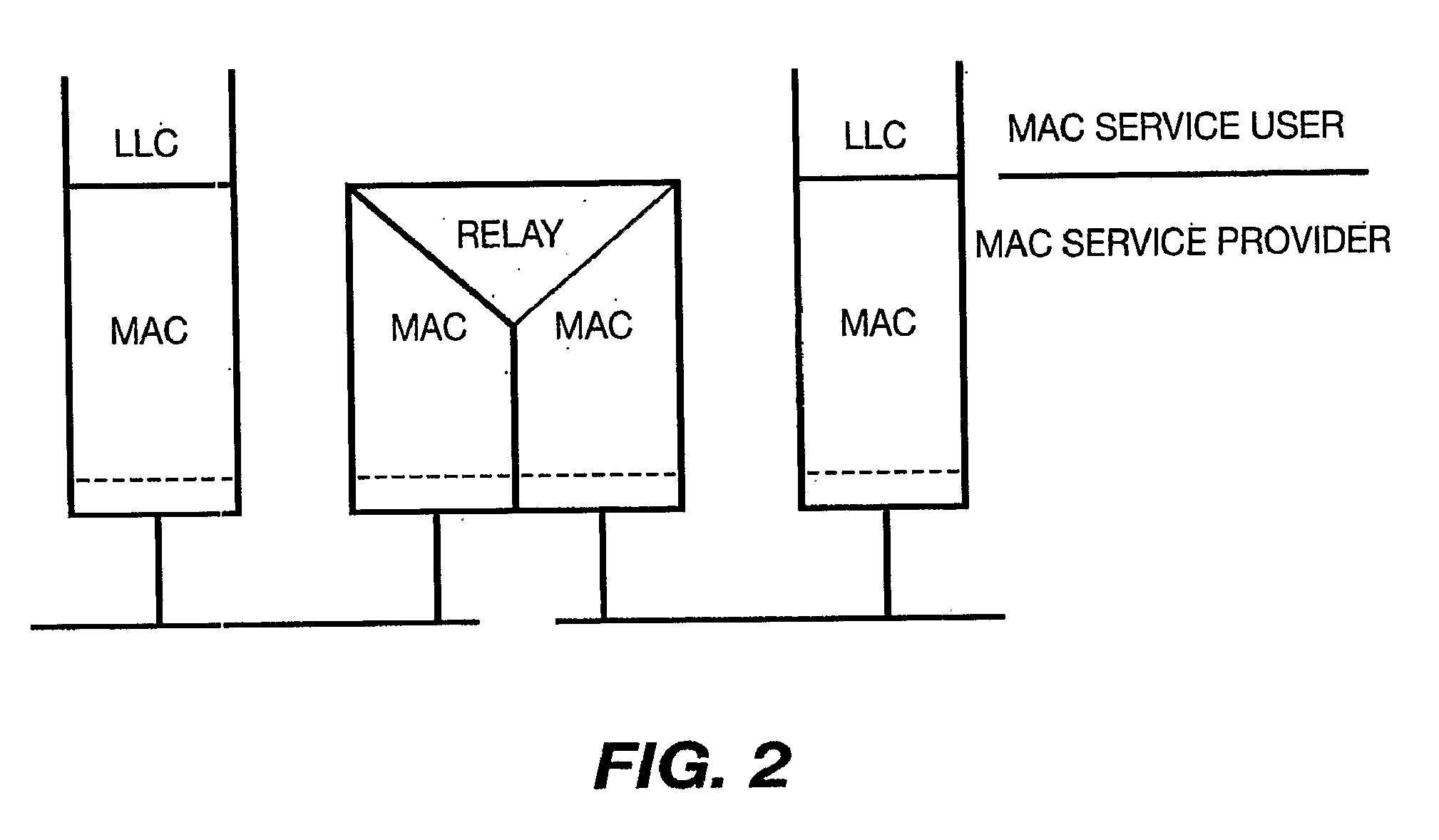Adaptive time allocation in a TDMA mac layer
a technology of tdma and mac layer, applied in the direction of selective content distribution, multiplex communication, assess restriction, etc., can solve the problems of inability to know all of the ip traffic characteristics a-priori, mac layer type is inherently inefficient, and provides no quality of service (qos) guarantees, etc., to achieve adapt quickly to allocate ctas, increase input arrival rate, and increase the effect of tim
- Summary
- Abstract
- Description
- Claims
- Application Information
AI Technical Summary
Benefits of technology
Problems solved by technology
Method used
Image
Examples
Embodiment Construction
[0034]The present invention starts with an IEEE 802.15.3B MAC, which supports TDMA services (beacon at beginning of the superframe with transmission time allocations within the superframe). Although other TDMA MACs are available and can be used (e.g., IEEE 802.16), there have been no attempts in the prior art to allocate CTA lengths dynamically purely based on traffic characteristics available to the MAC layer.
[0035]There are some features of TCP that must be considered when setting up CTAs. TCP is a transport protocol that makes use of 32 bit sequence numbers and request numbers and a 16 bit sliding window length field. These three numbers are used to implement a “Stop-and-Wait” or “Go-Back-N” ARQ error recovery scheme. Since TCP packets in the transmit queue and in the process of being transmitted are “in the network,” the TCP window must be set large enough by the destination to allow those packets to be outstanding. The present invention has no control over setting the size of t...
PUM
 Login to View More
Login to View More Abstract
Description
Claims
Application Information
 Login to View More
Login to View More - R&D
- Intellectual Property
- Life Sciences
- Materials
- Tech Scout
- Unparalleled Data Quality
- Higher Quality Content
- 60% Fewer Hallucinations
Browse by: Latest US Patents, China's latest patents, Technical Efficacy Thesaurus, Application Domain, Technology Topic, Popular Technical Reports.
© 2025 PatSnap. All rights reserved.Legal|Privacy policy|Modern Slavery Act Transparency Statement|Sitemap|About US| Contact US: help@patsnap.com



